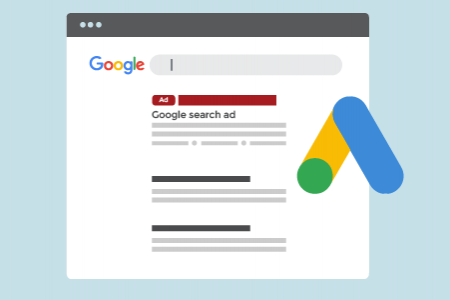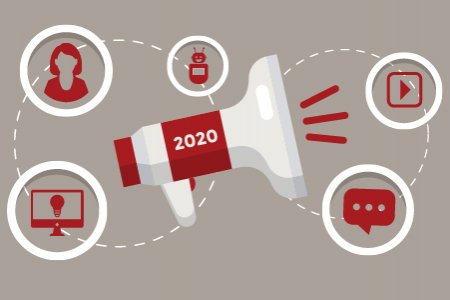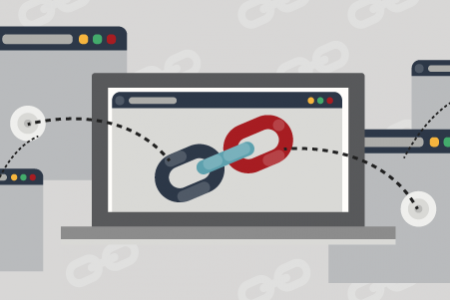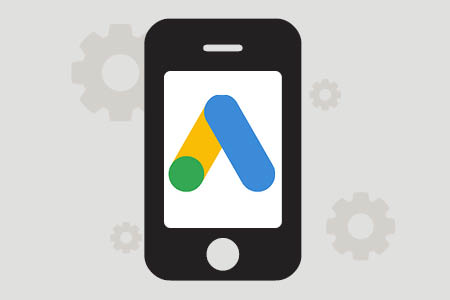We aim to respond to all messages within 1 business day. You'll be hearing from us soon!
In the meantime, perhaps you'd like to learn more...
Email Marketing 101
Over the past decade, email marketing has proven itself to be among the most powerful and effective forms of digital marketing. Take a look at these impressive statistics:
- According to McKinsey, email is 40 times more effective than Facebook or Twitter at acquiring new customers.
- When comparing all types of marketing messages (e.g. email, social, direct mail), email has the highest conversion rate at 66%.
- A study performed by ExactTarget, reports that 77% of consumers prefer permission-based emails to other forms of marketing.
- Email marketing can provide a huge ROI. Oberlo report that for every $1 spent on email marketing, there is an average return of $44.
- Over 50% of emails are first opened on a mobile device, which has led to an increase in email readership as people can consume content when and where it is convenient.
If email marketing isn’t a part of your digital marketing plan, it’s time to start thinking about how you can incorporate it. Today our goal is to give you a high-level overview of this powerful form of digital marketing. Once you understand how email marketing works, you’ll be in a better position to engage with a Digital Marketing agency or try out some strategies on your own.
Email marketing terminology
Before we dig in, we’re going to explain some of the words you’ll encounter when discussing email marketing.
- Subscribers – People who have willingly provided you with their email addresses (e.g. through a newsletter sign up form or by checking a box while creating an account).
- Email campaign – An email or series of emails that are created with a specific marketing goal in mind.
- Call to action (CTA) – The main action you want users to do after they read your email. Each email should have one primary CTA that links through to a relevant page on your website.
- Landing page – When a subscriber clicks on your email or your CTA, they are directed to a landing page. In some cases, a landing page will be specifically designed for your email campaign. This type of landing page tends to achieve higher conversion rates.
- Bounce rate – The percentage of emails that are not delivered with each mail out. A bounce rate of less than 5% is optimal.
- Open rate – The number of opens as a percentage of total emails sent.
- Click-through rate (CTR) – The percentage of recipients that click on your email. The rate is calculated by taking the number of unique clicks and dividing it by the number of emails that were opened.
- Conversion rate – The rate at which your email recipients responded to your main CTA. If tracking is set up on your landing page (which it should be!), you’ll be able to determine if your recipients completed the goal for the campaign.
- List segmentation – Dividing your list to select a target audience for a specific email message. Segmented lists tend to perform better and result in less unsubscribes and spam reports.
- Unsubscribe or opt-out – You must provide a clear way for subscribers to opt-out of future emails by unsubscribing from your list.
- Subscribe or opt-in – When your recipients choose to receive emails from you, they are subscribing or opting-in by providing you with their email address.
- Spam – Spam is defined as any email that has been sent to a person who has not opted-in or given you their permission to email them.
What is email marketing?
Email marketing is a type of digital content marketing that uses email to engage with existing and/or prospective customers. While the internet and digital industry have changed dramatically over the years, one thing has remained constant: the overwhelming majority of people still rely on email as their primary form of digital communication. And with the pervasiveness of mobile devices, people are checking their emails more frequently throughout the day. The World Internet Project NZ interviewed a sample of 1258 Internet Users in late 2015 and found that 89% of them check their email daily - with 74% of total respondents using a mobile phone to access the Internet.
When you build your subscriber list with emails that have been voluntarily provided to you, you are able to communicate directly with people who have already expressed interest in your business. In contrast to a cold call from a telemarketer, your email is an unobtrusive communication from a familiar company. It has the power to turn a lead into a sale, transform a one-time buyer into a repeat customer and keep your audience engaged with your business so that it remains a familiar name.
How to succeed with email marketing
Achieving success with any given email campaign depends on a variety of factors. We’ll discuss a few critical ones today.
Build your list
Like other forms of digital marketing, there are no shortcuts when it comes to building and growing your email list. You’ll need to find a way to attract email subscribers to grow your list. To do this, you must demonstrate that you’ll provide value in exchange for their email address. This can be achieved by offering free content, monetary discounts or other incentives such as free shipping. Experienced digital marketers often find creative ways to repackage existing assets to quickly create lead magnets to grow their list.
Maintain a healthy list
If you don’t have a robust email list, then your email will fall on deaf ears. To keep your list relevant and healthy, it’s important to review the results of each campaign. You should remove hard bounces from your lists and pay attention to soft bounces and recipients who repeatedly do not open or engage with your emails.
It is also critical that you ensure your emails are not being recorded as spam. With over 90% of email classified as spam, providers are serious about cracking down on unsolicited emails. In New Zealand we have the Unsolicited Electronic Messages Act 2007 to protect us – and this is not an Act you’d want to fall foul of! It is essential that you only email people who have opted-in to your services or have given you permission to email them. If you receive an unsubscribe request, immediately remove the recipients from your lists – this is handled automatically by most of the large email marketing platforms.
Segment your list
One of the best ways to improve CTR and conversion rates is to segment your list. If you have the budget, we encourage you to create uniquely designed campaigns with an incentive that is relevant to your target audience. Lists can be segmented based on a user’s behaviour on your website e.g. the content they consume or products they buy or browse. If set up correctly, your website analytics program will hold all of this valuable information.
Design your emails
Email design will influence your open rates and CTR. From the moment your email arrives in a recipient’s inbox, the user is faced with choices. Will I open this email? In order for them to open it, they need to recognise your name and be enticed by the subject line. After they open the email, they’ll need to decide whether to respond to your CTA.
A well-designed email will provide information to your users quickly and concisely. The design must be visually appealing and look good in their email browser. Think about eye-catching images and text. Your recipient needs to understand immediately why you are emailing them and what benefit your email provides if there is any chance of them responding to your CTA.
It’s also imperative that you test your email subject lines to see which result in higher open rates – most email platforms make this possible.
Plan for mobile
Over 50% of all emails are opened on a mobile device, so it is essential that your email looks good and functions perfectly on small screens. If your email is graphic-heavy, be sure to provide an HTML version that will display without images. We recommend testing each email on a variety of devices before sending it out to your subscribers. If you work with an established template that you have already tested thoroughly, then this testing process will be more efficient.
Create a clear CTA and actionable landing page
Getting users to open your email is half the battle. Once you have their attention, provide a clear CTA to bring them to your landing page. The landing page itself should be carefully designed to provide continuity between the email and your website. Don’t leave your recipients hanging. Once they arrive at your website, give them the information they need immediately and a clear path to conversion.
Automate campaigns based on specific triggers
If you’re smart about implementing automated emails in response to certain triggers, you’ll reap the rewards. For instance, say you have an eCommerce website and one of your members leaves the site before checking out. An abandoned cart could trigger an email reminding the user that they have left something in their cart. More information on abandoned cart emails and the Unsolicited Email Act and things you need to consider, are available here in a previous blog. Once automated workflows are set up, there’s no further work for you to do – just sit back and watch as your marketing emails turn leads into sales.
Limitations of Email Platform Tracking
It’s important to note that open rate statistics retrieved from email service providers such as MailChimp rely on recipients downloading images when they receive an email as open tracker or web beacon graphics are embedded into the campaign code. Web beacon trafficking is the industry standard and gives you a general overview of your subscriber engagement, but because it relies on a hidden embedded graphic, open tracking won't work if your subscribers have chosen not to display images in their email client. You can ask your subscribers to add you to their safe senders list, or ask them to choose to display images in their email client to get more accurate open tracking.
Another thing to be aware of is that messages from email service providers, like MailChimp, often have a higher chance of being delivered to the Promotions tab in Gmail which can result in some subscribers never seeing your email. Here are a couple of tips from MailChimp that you can encourage your subscribers to try so that email gets delivered to their Primary tab in Gmail.
Getting it done
We’ve given you a lot to think about today and we hope you’re feeling excited about the power of email marketing. If it seems like a lot of work or you’re concerned that your marketing budget won’t stretch to cover this important aspect of digital marketing, we can provide a bit of reassurance. Email marketing can be a pain-free and relatively inexpensive after the initial planning and setup. Here are two ways that you can get the most out of email marketing:
#1: Take advantage of automated tools
There are a number of excellent email marketing platforms out there that can do the bulk of the work for you once they are properly configured. Platforms such as MailChimp or Drip provide an easy way to set up newsletters, autoresponders, and drip email campaigns, even for those who are not technically inclined. These platforms provide user-friendly design tools and deliver useful reports that will help you maintain a healthy email list.
#2: Work with a digital agency that specialises in email marketing
When you first set up your email marketing campaigns, an excellent option is to work with a digital marketing agency that is experienced in email marketing. At Apex Digital, we work with our clients to:
- Attract email subscribers
- Grow and segment subscriber lists
- Design email templates that can be re-used on future campaigns
- Monitor campaign progress
- Proactively respond to campaigns to build success on future efforts
In some cases, we continue to manage our clients’ email marketing campaigns, but the vast majority of our clients will take the steering wheel after we’ve done the initial setup and training. This approach provides a cost effective way to incorporate email marketing into your business for the long run. If you’re interested in learning more about our approach to email marketing, please contact us today to set up a consultation with our digital marketing team.
Written by Mark Vassiliou
Mark is the Manager of Digital Marketing at Apex and has worked in the digital marketing industry since 2004. Prior to joining Apex he worked in a variety of traditional marketing roles in both the corporate and SME environment in NZ and abroad, but these days much prefers the tangible measurability and transparency of digital marketing.Related posts
AWESOME! LET'S GET STARTED
TELL US HOW WE CAN HELP
We aim to respond to all messages within 1 business day. You'll be hearing from us soon!
In the meantime, perhaps you'd like to learn more...






